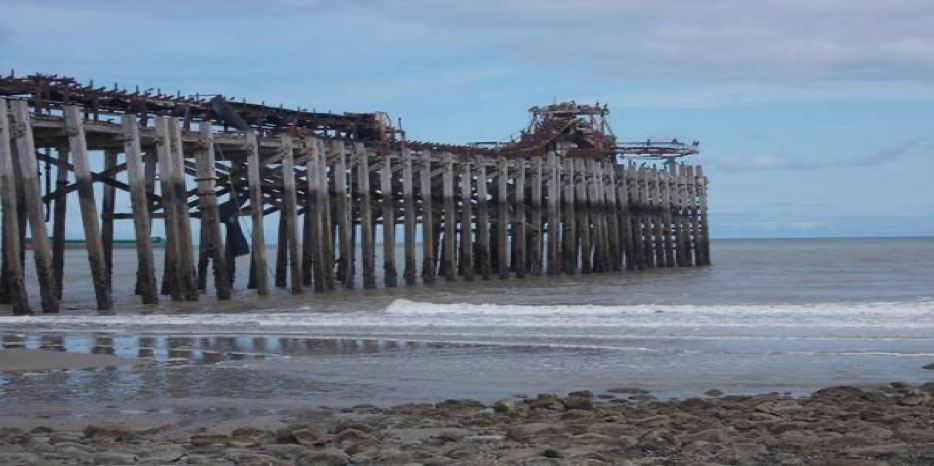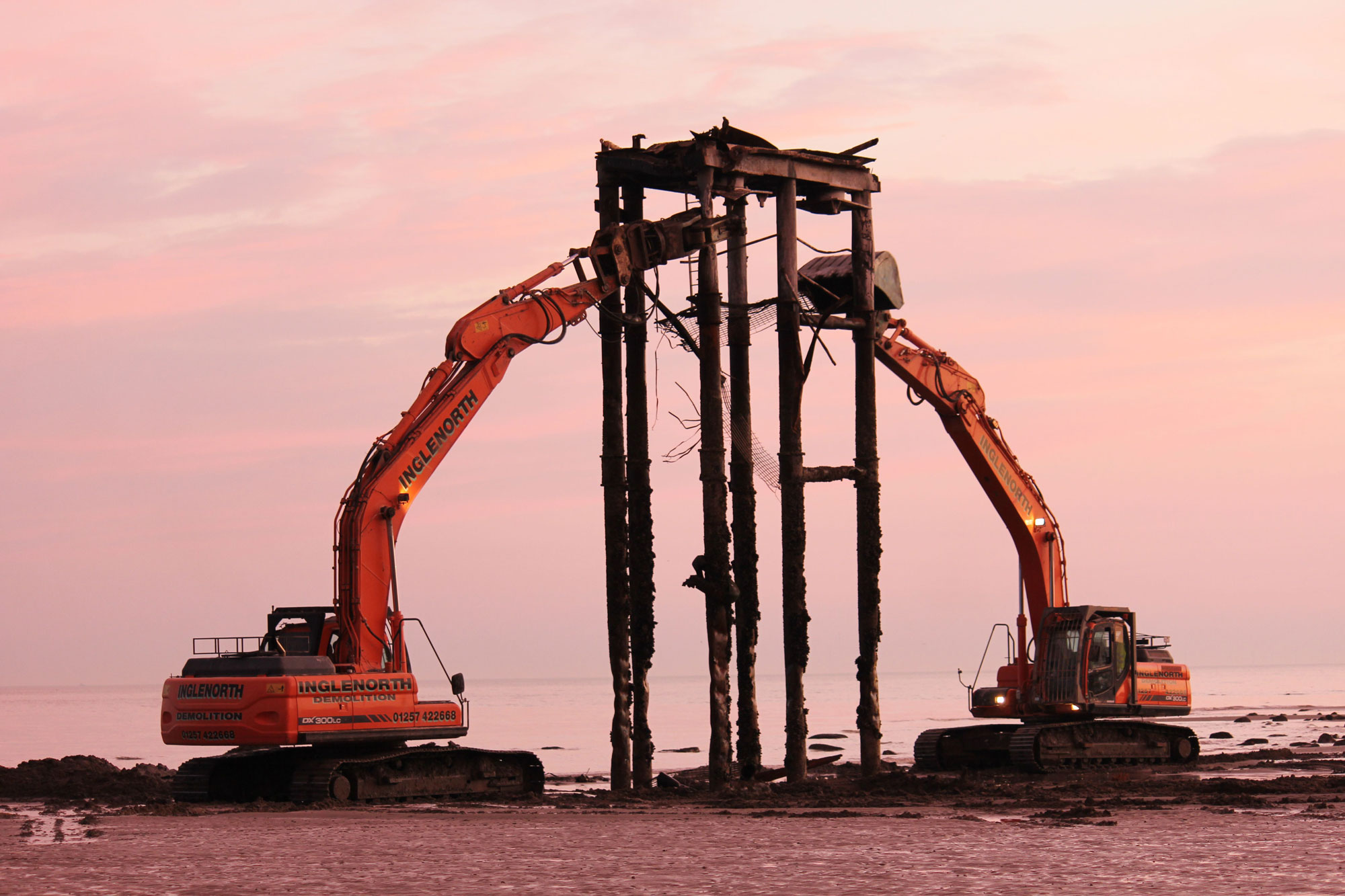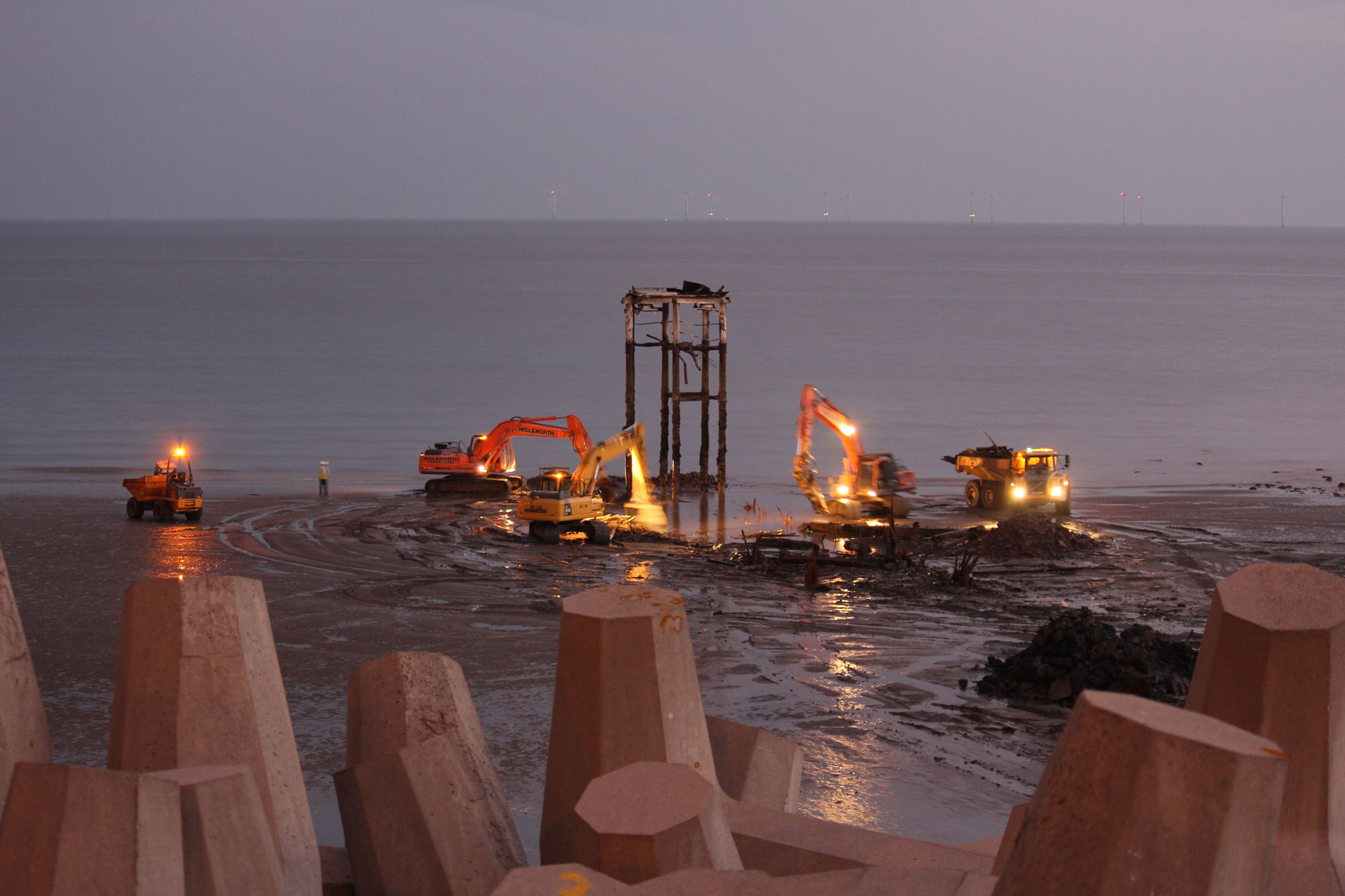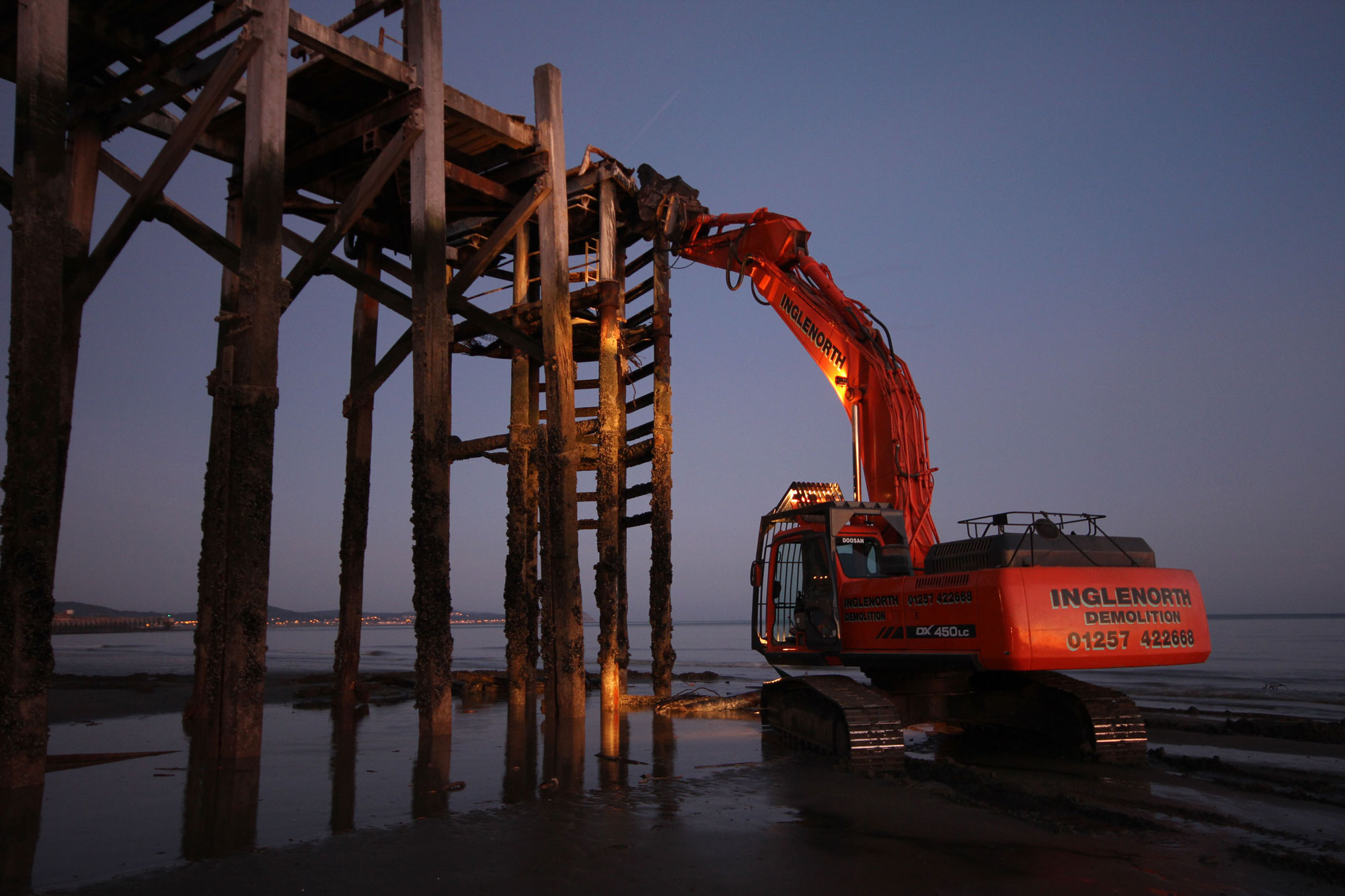LLANDDULAS PIER, NORTH WALES
Client – Jones Brothers
Project type – Maritime Demolition and Dismantling
Project length – 6 weeks (tidal phasing)
Project price – £400,000.00
Issues we needed to think about before commencing works
- Tidal phasing
- Weak structure due to age and location
- Poor working conditions due to location
- Environment impact avoidance
Llanddulas pier was historically used to load aggregates fed from the inland quarry with materials passing onto waiting boats that berthed at high tide.
Demolition of the pier started inland with works carried out to remove the quarry head building that accepted materials from the quarry and channelled them to the conveyor that ran under the main A55 dual carriageway and the main west coast railway.
All infrastructure conveyors, conveyor belting, and various items of plant and equipment had to be removed from the tunnels before the demolition of the pier itself was carried out.
Working closely with the highways agency and network rail to ensure all works had approval and the full understanding and permits of these departments to allow the works to proceed.
Once these works had been completed it allowed extra space for the creation of a beachside lay-down area to be prepared to store materials that would be coming off the beach during the pier demolition.
Works to the demolition of the pier itself had to be timed to allow access at low tide, consideration had to be made to structural stability after removing pre-agreed elements so that the structure could be left safe and had no issues with being engulfed by the high tide.
Careful consideration was placed on the local wildlife and environment with teams employed to monitor and stop any impact on the site-specific wildlife requirements.
Teams working in coordinated and pre-planned sequences dismantled the pier and cleared the area of any arisings daily pre-return of the sea, materials from the demolition works were transported to the lay-down area at the head of the beach.
All waste materials were segregated into component items i.e.: wood, scrap metals, or waste for onward transport to suitable recycling facilities.
Considerable efforts were made to ensure no waste went to landfill unless absolutely needed to and in one instance some of the timber even went away for recycling by a craftsman into totem poles.
All works were completed on time and within budget.








